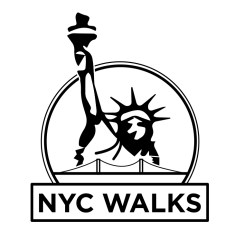Generation II: Frederick Christ Trump Expanded the Family Fortune

Frederick Trump, the oldest son (1905-1995) was born in the Bronx, New York, the son of Fredrick Trump and Elizabeth Christ Trump. He grew up in Woodhaven, Queens, where he graduated from Richmond Hill High School. In 1936, he married Mary Anne MacLeod, a Scottish immigrant, and settled in Jamaica Estates, Queens, where they raised five children. A friend of mine who delivered medicines to the residence for his father’s pharmacy said they never tipped.
Fred Trump became a carpenter and took classes in reading blueprints. Two years after his graduation, he finished his first house. In 1926, he had already built 20 homes in Queens. In partnership with his mother Elizabeth Christ Trump, Trump began a career in home construction and sales. The development company was incorporated as Elizabeth Trump & Son in 1927 because he was still underage, and his mother officially headed it until he turned 21. The company built and manage single-family houses in Queens. By the mid-1930s, in the middle of the Great Depression, he helped pioneer the concept of supermarkets with the Trump Market in Woodhaven, which advertised “Serve Yourself and Save!”, becoming an instant hit. After a year, Trump sold it to the King Kullen supermarket chain.
During World War II, Fred Trump built barracks and garden apartments for the U.S. Navy near major shipyards along the East Coast, and more than 27,000 apartments in New York City. After World War II, in 1954, Trump was investigated by a U.S. Senate committee for profiteering from public contracts, including overstating his Beach Haven building charges by $3.7 million. In testimony before the Senate Banking Committee in 1954, William F. McKenna, appointed to investigate “scandals” within the FHA, cited Fred C. Trump and his partner William Tomasello as examples of how profits were made by builders using the FHA]409 program. McKenna said the two paid $34,200 for a piece of land which they rented to their corporation for $76,960 per year in a 99-year lease so that if the apartment they built on it ever defaulted, the FHA would owe them $1.924 million. McKenna said that Trump and Tomasello obtained loans for $3.5 million more than the apartments cost.
After World War II, Fred continued to construct shoddy fashion low-income apartments and row houses in Brooklyn and Queens. By this time, Fred became a crony capitalist by mastering politics—giving contributions to the right politicians and lobbying to get his share of state-sponsored projects, as well as tax write, offs and lucrative tax breaks. The young Donald Trump would use his father’s considerable wealth and political connections to advance his own business agenda. To complete Fred’s largest project — Trump Village on Coney Island —New York State evicted almost 1,000 families, many of the African American who were then excluded from the union-run housing project.
Folk icon Woody Guthrie was a tenant in one of Trump’s apartment complexes, Beach Haven Apartments in Coney Island, Brooklyn in 1950. Guthrie criticized him as a landlord in a song: “Old Man Trump,” whom he accused of stirring up racial hatred “in the bloodpot of human hearts”.
The U.S. Justice Department’s Civil Rights Division, upon the urging of the Urban League and the New York City Commission on Human Rights, sued Fred Trump and company 1973 for refusing to rent apartments to black people, thus violating the Fair Housing Act of 1968. His son Donald was part of the lawsuit because he had been made the president of the company in 1971. In response, Trump attorney Roy Cohn “portrayed the Trumps as the victims and counter-sued” for $100 million by implicating the DOJ for “falsely accusing them of discrimination, a pattern of attack and counter-attack that Donald Trump would use. A settlement was reached in 1975 in which both sides claimed victory. The Trumps agreed to advertise vacancies in minority newspapers while having the right to reject rentals to welfare recipients.
On the other hand, Fred Trump cozied up to the Jewish community. Before World War II, he had claimed the family to be Swedish because Nazis had made being of German ancestry bad for business. After World War II, Fred Trump began donating to Jewish causes and foundations including even giving land in Brooklyn for the construction of a synagogue. He even became friendly with an Israeli prime minister or two.
Fred Trump appeared on the initial Forbes 400 list of richest Americans in 1982 with an estimated $200 million fortune shared with his son Donald. In 1976, Trump had set up trust funds of $1 million for each of his five children and three grandchildren ($4.4 million in 2018 dollars), that paid out yearly dividends. By 1993, the siblings’ anticipated shares of Trump’s estate amounted to $35 million each. Upon Fred Trump’s death in 1999, his will divided $20 million after taxes among his surviving children. His oldest son and namesake, Fred III, had died at age 42 in 1981.
The old man was tough on Donald Trump. Trump always has a framed black and white photograph of his father always on his desk or in his bedroom wherever he travels, stays, or lives.
NYC Walks Blog 74 Generation II: Frederick Christ Trump Expanded the Family Fortune © 2019 by Dr. Philip Ernest Schoenberg
